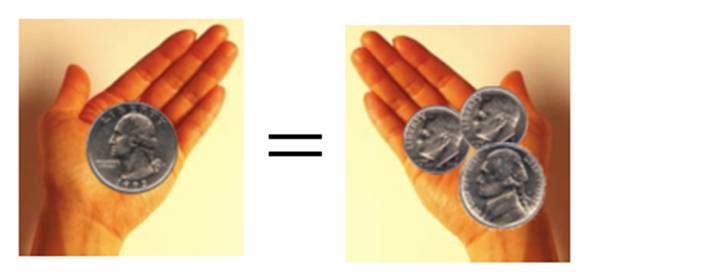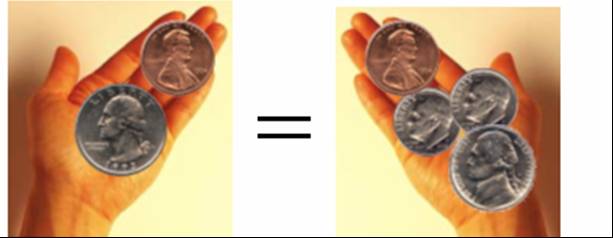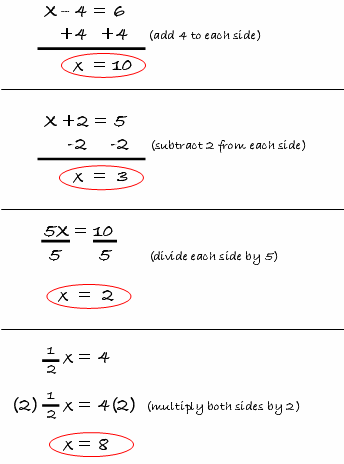
 |
|
|
|
The Math Property of EqualityWhen you first learned about the math property of equality in elementary school, the symbol was used to signify this is the answer.
In the figure below, you see a set of hands each containing $0.25. The left hand has a quarter, and the right hand has 2 dimes and a nickel. Both sides have different coins, but equal money.
Equality says that I can perform an operation (add, subtract, multiply divide) on my equation as long as I do the same thing to both sides. Watch how I add $0.01 to each hand...
In the illustration above, we used the property of equality by adding a penny to each side of our equation.
Remember, the math property of equality says that you can perform an operation to an equation, as long as you do the same thing on both sides!
|
| . | ||
| Home │ Site Search │ Math Help Blog │ Help Keep GradeA Free | |
Written by Team GradeAmathhelp.com, all rights reserved. | ||



